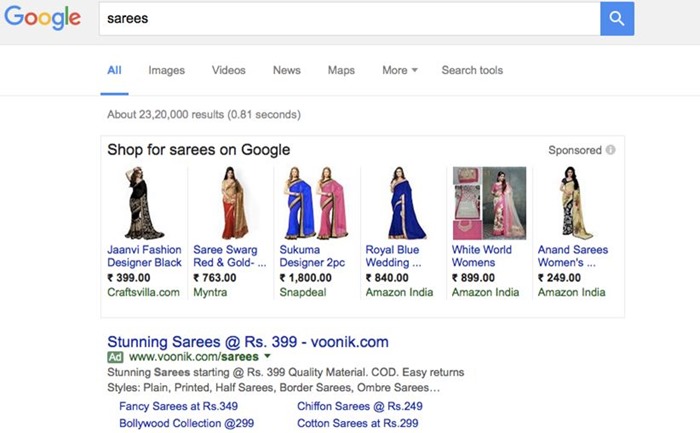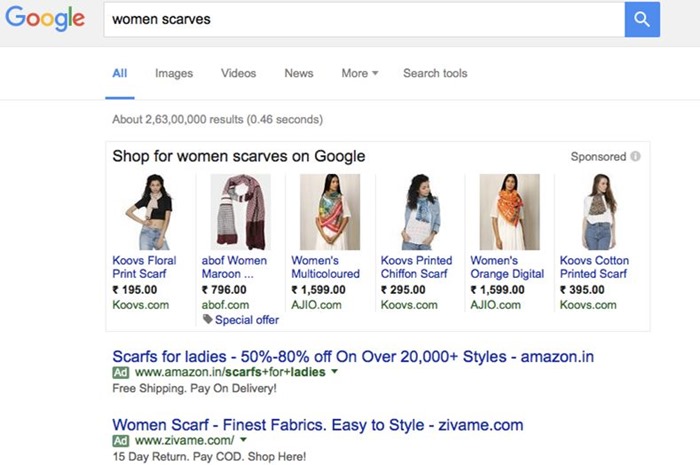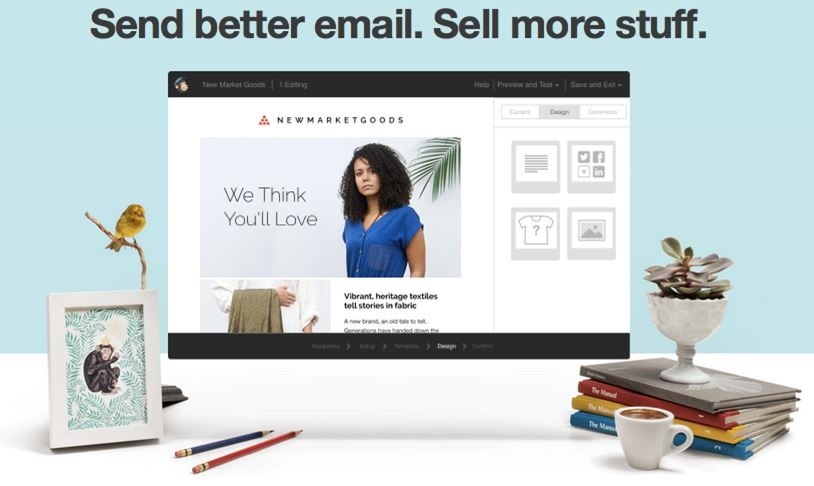Promoting Your Ecommerce Site On A Budget: A Complete Guide

As a business owner, your number one priority is to increase profits, everything else trickles down from this primary devotion.
The first half of building a profitable ecommerce business is to design & develop your site, followed by promoting it. Ecommerce site promotions can be referred to as online marketing, digital marketing etc.
Marketing plans defined in silos rarely works, what helps businesses is a cohesive, robust marketing strategy which involves both online and offline promotions of your ecommerce site.
Many technology products and services have made digital marketing a tad easier today, if not a cake walk. However, lack of knowledge in this aspect means a business owner has to shell out a lot of money either to hire an in-house marketing team or outsource the responsibility to an agency.
Both aspects have their own pros and cons. However, what we want to accomplish through this post is to help out business owners who are on a tight budget to form an effective marketing strategy and offer tips to execute it.
Contents [hide]
What are the ingredients of a thorough ecommerce marketing plan?
There are six main factors which help us form an outline to draw a thorough marketing plan.

Now that we have an outline to work with, let us elaborate each section. We shall address each subsection with a modest definition, followed by a key What To Do section for you to implement. Not all strategies are gospel, if they are not flexible to suit an individual business need, then the strategy ceases to be effective.
1. How can Search Engine Optimisation help?
Google has become synonymous with online search. Whenever we want a specific product, we tend to ‘Google’ it. The search results shown on the first few pages determines how web traffic is diverted to ecommerce sites. As a result you need to get your site up on Google and Bing search engines. There are three simple ways (among many) to boost your site’s search engine profile: Directories, Keywords Targeting, PPC, Product Listing Ads, and Dynamic Remarketing.

Directories are online repositories where you list your ecommerce site. Keywords targeting involves conducting thorough research of ‘Key Words’ which describe your products. And finally, there is PPC (Pay Per Click) adverts on search engines and other websites.
What to do
Directories: Visit the Google Business Listing and Bing Business Listing sites to register your business as an ecommerce website. This allows the respective search engines to throw up better search results to consumers when they search for products which you sell.
Keywords Targeting: Make a list of all your products and under each product make a list of keywords which defines each product. For example, for a product like Men’s Jeans, your keywords can be Men’s Denim, Men’s Loose Fit Jeans, Men’s Blue Jeans etc. Once you have a compelling list, use these keywords in your individual product descriptions, blog posts, social media posts, and other relevant platforms. More on blogs and social media later on.
Pay-Per-Click Campaigns: Start with creating banner ads on relevant sites and social network ads using your list of keywords. However, do not stop here, good quality images, product description and offer descriptions (if any), all go into creating an effective PPC campaign. The right tool to set up your Pay-per-click campaigns is Google Adwords.
Product Listing Ads: Product Listing Ads are cost per click (CPC) ads which online merchants purchase through AdWords. These ads appear on Google Search pages to the left, and top of results. Product Listing Ads are most distinguishable in that they:
- Feature a product image, and
- Are tailored towards products and product categories (vs. keywords)
In the snip below, the ads for scarves which have images are Product Listing Ads. You’ll notice those ads have prominent product images. You can visit Google Shopping Campaigns site to set up your product listing ad.

Dynamic Remarketing: Remarketing allows you to show ads to people who have previously visited your website or used your mobile app. Dynamic remarketing takes this a step further, letting you show previous visitors ads that contain products and services they viewed on your site. With messages tailored to your audience, dynamic remarketing helps you build leads and sales by bringing previous visitors back to your site to complete what they started. Visit Google’s site on Dynamic Remarketing to set your campaign now.
2. A Blog can help you build brand identity?
Blog is a fantastic platform to share your (business) product and promotional ideas with consumers, and offer them a peek into your brand. A blog is a platform to offer potential consumers something of value, encourage them to engage with each blog post and receive feedback. All this helps you to align your business with customer requirements.

Image from Warby Parker
Imagine, that you post a 600 word piece on your blog about launching a new range of apparel. This blog contains exquisite pictures, graphics and valuable information about things which matter to consumers (fabric, price, colors, etc). This post goes on your social networks, and people start engaging by commenting. This is direct feedback from potential consumers, which cost you almost no money at all. No advertising campaign can take you this close to consumer’s opinion than hosting information on your blog.
It is not only your new launches, with a strategic plan, you can repurpose old stock, promote your sales and service, run contests to gather market information, etc. The possibilities are endless.
All of this can be achieved if and when you develop a moderate fan following. As a result, Blogging is the best way to initiate the process to acquire consumer interests via tapping their emotional needs.
What to do
Set up your blog under your ecommerce website. There are numerous technology platforms which help you house both the SITE and your BLOG together, WordPress seems to be the most popular and design friendly platform.
Form a strategy for your blog posts (include relevant pictures, videos, graphics, in each post).

Use your keywords to form Blog post titles and write about them. Distribute your blog posts on the brand’s social networks.
Engagements on social forums is another way to build brand reputation. Sites like Quora, social groups on Facebook have many lively discussions about fashion trends, celebrity fashion, etc. Be vigilant and participate in these discussions. You should comment your opinion and distribute your blog post links to drive consumers to your site.
Product reviews and guest posts can also drive a lot of traffic to your ecommerce site. Make a list of relevant popular product and fashion trends influencers. Connect with them and offer them incentives or product trials in return for a review or a guest post on your products. Influencers have a lot of fan following, usually they drive a lot of traffic to your site via guest posts and product reviews.
3. How can Social Media help you?
Popular social networks offer two distinct advantages. They gather lots of people around and offer a way to communicate with them. A business’s main aim is to find an effective way to reach its target audience, and social media trumps all other platforms.
Within the social media realm, two factors matter for ecommerce businesses. They are presence and appearance. The strategy should not be to ply on as many networks as possible, but to be present on the relevant ones. For example, for a fashion ecommerce site selling women’s ethnic wear, Facebook, Pinterest, and Instagram takes precedence compared to LinkedIn. As far as appearance is concerned, you have to find the ideal balance between posting too many times and neglecting the networks.
What to do
Assess and make a list of social networks which are relevant to your product line. Maintain uniform profile pictures, cover photos, usernames across all pages. This helps consumers identify the brand quickly.
Social networks’ biggest draw back is too much content leading to short attention span. So, limit the number words, and find a right balance between pictures, videos, and graphics and do not forget to link relevant posts back to your site/blog.
To schedule social media posts efficiently, there are online tools such as Hootsuite, Buffer, SproutSocial and many more. These tools help you upload all the images and text and schedule your tweets and posts weeks/months in advance. However, you have to monitor every social page at least three times everyday to respond to comments and direct messages.
Every social network is designed to consume a particular variety of content. Instagram and Pinterest are for pictures, YouTube for videos, and Facebook and Google Plus are all rounders, and Twitter is primarily what Facebook and Google plus is but with character limits. As a result it is imperative to form a social media strategy for each individual network.
4. How can Email Marketing help you?
All through your blog and social media promotions and contests, you give away valid information, sneak peek into upcoming products, discounts etc, in return it is absolutely necessary to collect user information such as name, age, location and email address.

Image from Mailchimp
This is a minimum requirement. Use this data base of potential consumers to send bi-weekly or monthly newsletters with interesting content. This helps you build a constant, consumer relationship as a brand.
Emails should be sent when visitors fill in the form with details (a welcome email). Automatic emails should be triggered post purchase and also if the transaction failed due to various reasons. A confirmation email, post purchase completes the cycle. However, if you find other instances where you want to acknowledge the visitor/consumer, by all means prepare an email trigger to do so.
What to do
The most popular tool to design, schedule, deploy and maintain email newsletters is Mailchimp. They offer services for free as well as at a cost, depending on the number of email addresses you use. Do check them out.
5. How can Coupon Sites help you?
With marketplaces such as Flipkart, Amazon, Snapdeal and the lot fighting each other in a price war, it is a must for you to offer some level of knock-offs on your prices as well. Coupon sites are dime a dozen, but they turn out to be highly effective in driving a lot of traffic to your site.

Image from Coupondunia
What to do
Conduct thorough research on which coupon site(s) suits you best, and register your site and offer timely discounts. Every coupon offer must be shared on your brand’s social networks, to maximize reach.
6. How can PR help you
PR in simple terms means to publish your brand updates and product launches on news tabloids and relevant, popular online portals. Hundreds of thousands of people who throng to read news updates on sites who promote new age business, small and medium, technology led business news. This way, ensures that your major updates or product launches gets to be read by a lot of people. Again, this helps to drive a lot of traffic.
What to do
As a business owner, be sure to read news pieces about your industry, competition, trends etc. While you do so, make a list of popular tabloids and websites, and their corresponding writers (usually the writers of posts which you read). Most sites today mention the author’s social network handle underneath their names.
If not, write to the website’s main/PR email requesting to write a story about your brand. A tip here is to make sure to prepare a crisp brief about your brand with a team photo and a couple of screenshots of your website and put them all in your kit while you write to authors/sites.
So, if you are planning to promote your online business in a cost-effective way, make use of these pointers from the next time.
About the Author : Amit Jain, founder Purple Stores, is an engineer from IIT Delhi, MBA from SP Jain Mumbai and worked with Fortune 5 company for 8 years in operations, finance, and risk before taking the entrepreneurial plunge. Amit is also an active speaker and contributor in the e-commerce space in India.
